Introduction
In a world where everything has been digitized, and advertisement on the streets has taken a backseat, the best tool a company has to get noticed is the Internet, and today we dedicate this detailed guide to all the companies and businesses that have not yet been able to make their way through the big world of Google and search engine optimization (SEO).
This practice is essential for anyone who wants to increase their visibility and attract new customers. In this guide, you’ll learn everything (literally everything) you need to appear in the first results of Google.
Consider this article your best ally to optimize your online presence, covering topics such as Google Maps (Google my Business), Google Ads, and other search engines such as Bing, Yahoo, and Yandex.
After a long introduction, let's start with the basics:
Why is it important to appear on Google?
Google is the main search engine worldwide, during 2022 it had around 84.08% of users among all search engines that exist, that is more than 4 billion people using it! Without ignoring that approximately 3.5 billion searches are carried out daily.
With this we want to make clear, why not be present there? We can assure you that someone will find you, and with some effort and time, you will start seeing your first hundred visitors soon.
How does Google work?
The famous search engine works thanks to a series of complex algorithms that are responsible for reading each of the published web pages, the “Crawler”, also known as a “spider” or “robot” is responsible for entering each page, reading the content and categorize it, associating it with a topic and a series of keywords, such that said page could serve as an answer, complementary information or interest.
Google puts searching users first and wants to provide the highest quality answers to their questions, so it will always look for unique and detailed content on your website.
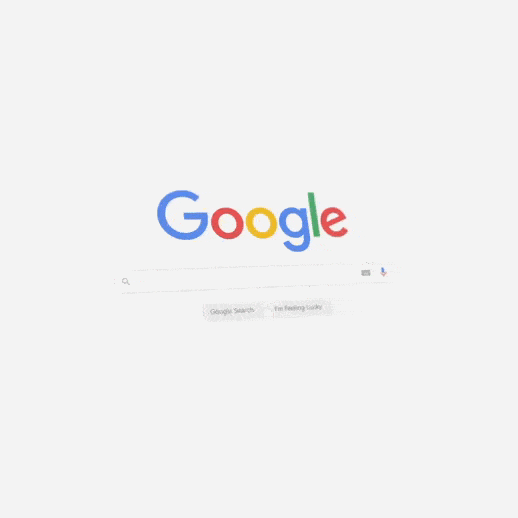
Let's not leave the other players out: Bing, Yahoo and DuckDuckGo can also bring you traffic
As we mentioned before: Google has the vast majority of the market in terms of search engines, but we must not forget that although Bing, Microsoft's search engine, has around 9%, that number still represents millions of users, and depending on your country, the popularity of one or the other may vary.
For example, in Mexico in 2022, 27% of users said they used Yahoo as a search engine, so depending on the country where you want to position yourself, you will have to research on which are the most popular media to have the greatest reach.
International? Baidu and Yandex
There are specific search engines in some countries, which will be important for companies with an international reach, for example: a travel agency that sells vacation packages will want to be found all over the world. If you identify a potential market abroad, then you'll want to check out Baidu for China, where Google is blocked on a national level and Yandex for Russia. But don't worry, we will review how to enter each of them.
How to appear in the first results of Google and other search engines
Set goals for your digital business
The first thing to understand is that everything we’ll do from now on will be focused on the digital version of your business, whether you have a physical business where you serve customers, a store, or a site of interest, we will be positioning your virtual business, and It's important to establish objectives that adapt to it, although the main objective is usually to “sell more”, you have to think that if you are starting a more realistic objective it could be to get your first 100 visits to your website, or to get 10 leads per month, which are basically people who interact with you by sending you a message, calling you or presenting any purchase intention in your business.
“If your business is not on the Internet, then your business will be out of business.”

Keyword research
Once you have your goals clear, we can move on to the first technical step of SEO (Search Engine Optimization). This is the term that we will use from now on to refer to the entire process that will lead us to the highly prized first place in Google.
Here we will define what terms people might use to find us in search engines, identify what questions we can answer for these users, and use these as the basis for keyword research.
The best thing will be to use the tools that automate a large part of the work, we leave you our selection of the best below:
This is the most complete tool that we can recommend, you will be able to carry out your keyword research, but it also has many other modules to investigate your competition, social media topics, and more.
Another of the tools that we use, like Semrush here you can create “projects” to analyze a complete website in all aspects.
An excellent tool for doing keyword research, it has an extensive database, verified by us! It is a fairly accessible option for those who are starting out or who need a basic plan, in addition, they offer other tools to cover all your needs.
You will have to open a Google Ads account to use it since it is within that platform. Surprisingly it is not our favorite tool, and despite being from Google it does not offer half the information that the previous ones, but it is a good starting point if you want something totally free.
This platform is good for finding current topics of interest, it searches for any topic, and will return results of the most relevant news and topics live.
Bonus: Google Search Console
We will talk about this tool a little later in the article, but you should know that it is one of the most important. Activate it from the beginning so that you can collect information about the keywords for which your website is positioned, after a few weeks it can guide you through its reports to find out what is successful and what needs to be improved.
These tools will help you get new keyword ideas and complement your list.
The best tip we can give you is to go one step at a time, choose a main keyword for each page, a secondary one, and 8-10 support keywords that can be variations, but all the effort will be directed towards the main keyword, this way, we can concentrate, and not disperse all the effort we are making.
We often come across many sources that claim that dozens of keywords must be used to position a page, but it has been proven that this practice is slow and ineffective, since by wanting to cover too many topics, we end up having a confusing and mixed page.
Keyword relevance, intent and traffic
These 3 concepts will be extremely important when defining your list of keywords, since it will depend on finding the perfect balance between the 3 to formulate a successful strategy.
We will use as an example a web page that sells tours and experiences in the Riviera Maya to better explain and give real examples from now on:
Difficulty
This parameter is defined similarly through the tools we presented above, and it is not a number that Google gives us, but rather a score that each instrument calculates based on the number of websites competing for a specific keyword, and their quality.
On many occasions, the difficulty will increase as the keywords or phrases become shorter and more general:
tours in the riviera maya
- Difficulty: 35/100
- Volume: 210/month
What is the best tourist destination in Mexico?
- Difficulty: 13/100
- Volume: 20/month
tulum ruins
- Difficulty: 71/100
- Volume: 12,100/month
Intent
Keyword intent refers to the reason behind a specific query on a search engine. In other words, what we believe to be the user's purpose in conducting an online search.
Search intent can be classified into 4 types:
Informational intent: when the user is looking for information on a specific topic, such as a definition, a tutorial, or the answer to a question.
Transactional intent: when the user seeks to carry out a purchase action, this intention can be found in the middle of the commercial and informational intent, since this query can represent the purpose of buying as well as researching more about the concept.
Navigation intent: when a user searches with the goal of finding a specific website or web page. The user already has the website or page they want to visit in mind, but they may not remember the full URL or may want to search for it via a search engine.
Commercial intent: in this search intent, the user has a general idea of the type of product or service they wish to purchase. However, he is looking for some extra information to help him make that decision
3 . Traffic
Keyword traffic (also known as search volume) refers to the number of monthly searches that are performed on search engines for a specific keyword. In other words, it is the number of times users have searched for a particular word or phrase in a given month.
Keyword traffic is an important metric, as it helps identify the most business-relevant keywords and develop content and SEO strategies to increase search engine visibility. The higher the keyword traffic for a given keyword, the higher the traffic potential a website can get if it ranks in the top search results.
Websites in multiple languages
Having a multilanguage website is something that happens often, most likely you want to have your website in English and offer a Spanish version in order to reach many more people, so you will have to take into account that all the work related to the contents will be doubled.
You will have to carry out keyword research for each language, and for a quality SEO it will not be enough to pass your text through Google Translator and paste it back on the site, you have to do a professional translation, transporting phrases and concepts so that it makes sense to a native reader as well.
The vocabulary in each country is different, so it will have to be optimized for the target audience we have in mind.
Analyze your competition
Any website that offers products and/or services similar or the same as yours is considered your competition, the more similar it is, the more important it will be to keep an eye on them and be aware of what they do and be able to create a strategy that offers greater value than them
You will find the competition by searching among the best results of the keyword or key phrase for which you want to position your website, and when putting together your list of competitors you should take into account the following points:
Similar services and products: do they offer similar products to yours?
Location: do they operate in the same area as your business?
Presence: do they have several communication channels such as social networks with many followers, advertisements, an active blog, advertising, local presence, etc.?
Authority: using the competition analysis tools you will be able to see how much authority a website has in general, this is measured through the links and mentions that the websites get on other pages.

SEO overview: in those same competition reports you can find an overview of the “health” of their website, see if it is optimized at a technical level, and the keywords for which it is positioning.
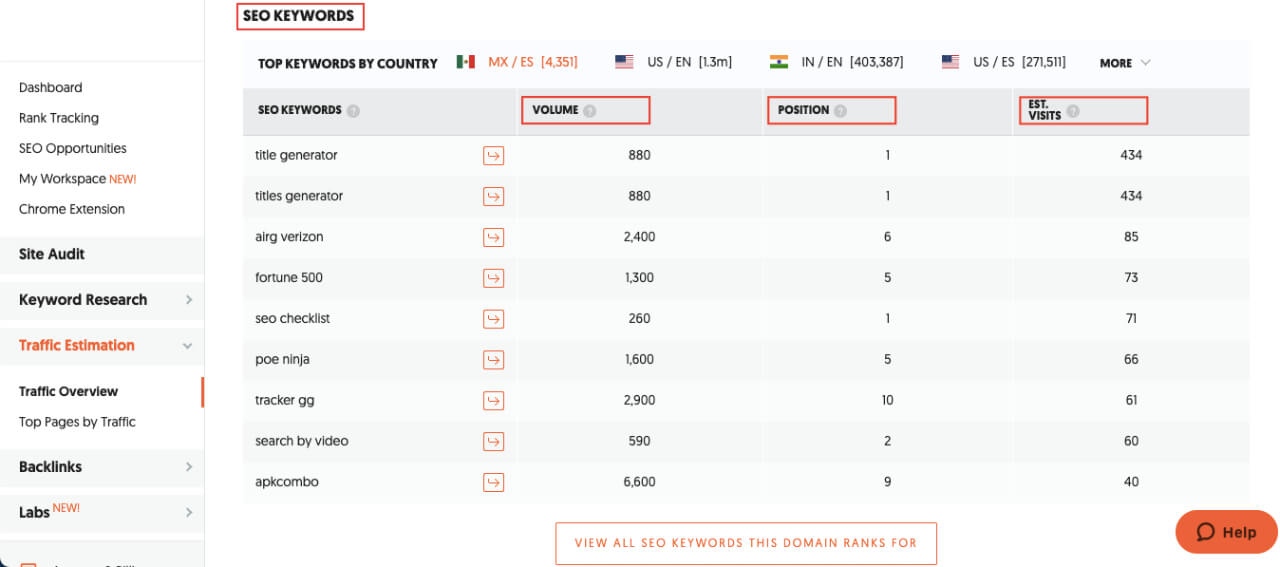
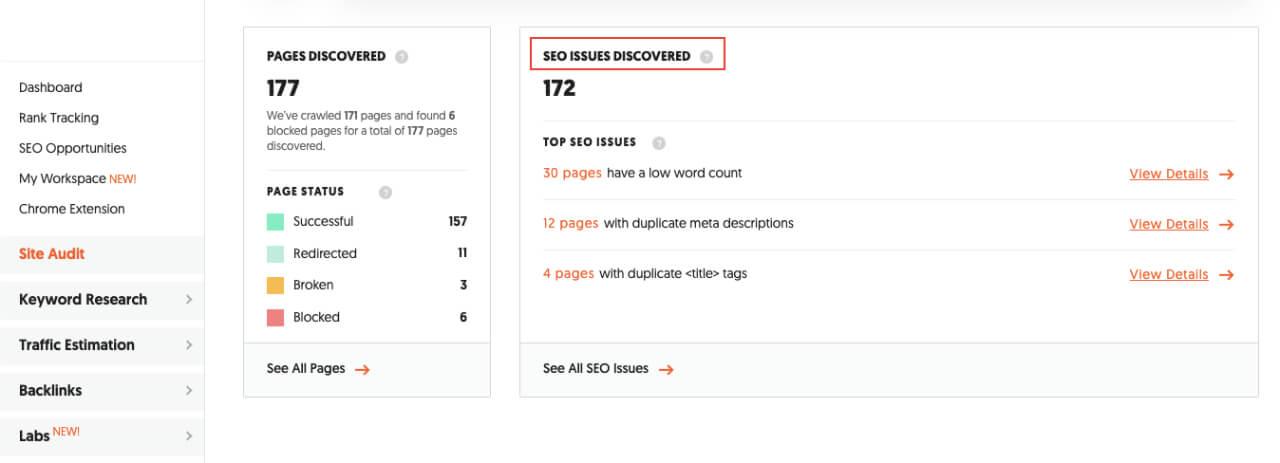
At Uno Web Design we focus on SEO per page, which means that each individual page within a website has its own strategy based on the general objectives, we recommend doing it in the same way.
Each service or group of pages will have a different competition, especially if you have a site that covers multiple types of products.
For example, a department store that offers various products within “departments”: the department or group of pages for kitchen products will compete against other department stores (essentially similar businesses), but it will also compete with bakery accessories boutiques, specialty stores in household appliances and glassware and tableware stores.
On the other hand, your clothing department could compete against the websites of fashion designers, clothing stores, and local textile artisans.
You can get an idea of where it's going.
Competitor analysis tools we recommend:
Content optimization for SEO
Create content focused on your products and services
Now, the step where you will have to get out all the creativity that you have inside, is time to write!
“If it doesn't sell, it isn't creative”

On the Internet, there are millions of websites and thousands that surely sell the same thing as you, so it is not only about describing your product or service, it's about transmitting the added value that you bring to a person or business that can buy from you.
Make your potential clients feel special, emphasize how you will make their life easier, what will improve when they buy from you, how much time you will save them, etc.
Headings
The headings will be one of the most visible elements on your web page, make sure you convey the general idea well and have concise, original, and readable titles.
Copy
The “copy” or writing will be where you develop the information that describes your product, as we already said, in an original and creative way, the golden rule of SEO is never to copy content from another place.
On many occasions, people are not going to read absolutely everything you write, at this moment, it is certain that at least 80% of the people who opened this article will never make it to the end, but thanks to the fact that we cover everything necessary for you to appear in Google, people with different needs will come to this page and take what offers them the most value, it could be these content writing tips, technical hacks or the guide to appear on Google Maps, and they will be guided thanks to the headers and the structure of well-defined sections, which you must also take into account.
Format
Don't forget to use bold letters to emphasize especially relevant phrases and italics to indicate technical terms, in other languages, quotes, or different languages!
Also lean on the different formatting elements that you have at your fingertips, such as lists, paragraph alignment, and tables.

Meta title and description
These two elements are the ones that define what will appear in Google when your page is displayed in a search result. We recommend optimizing these elements as follows:
Meta title
It must be a maximum of 55 characters and you must include your main keyword.
Meta description
You must limit yourself to a maximum of 155 characters, and summarize what the user will find on your page, including the most important point and your main and/or secondary keyword.
The character limit is because if you write a very long text, Google will cut it off with an ellipsis (…) and people will not be able to understand the title well, or you will leave out important information.
UX / UI
Give yourself a moment to think about the user
In the end, everything we do is so that people can find us, understand our products, and buy them, so we always have to think about them, how they will feel when they browse our website, and how are we going to inspire them to stay and read more about us, how are we going to help them find what they need from us.

UX / UI
In recent years, SEO has been associated a lot with the design of the Interface and User Experience, the combination of making people find you and also stay on your website for a few minutes is the winning strategy to generate conversions, so you will have to pay special attention when designing your website, the position of the call to action (buttons), font sizes, images, etc.
Along with the design, you must pay attention to the journey that users can take on your website, the path must be clear and intuitive, take them from the homepage to the conversion in a fluid and clear manner.
CTAs
Call to action (CTA) are the buttons that generate some interaction with the user, a contact form, a call, or some other action to bring the user closer to you.
There are many ways to optimize these CTAs, from the design – making them contrast with the general colors of the page, highlighting them with visible typography, and adding some animation – to the text, researching and testing to find the best version.
Technical SEO

We are done with the semantic part! Welcome to the insides of SEO, in this section we will review everything that has to do with code that affects SEO on your website, and although it may be a bit scary at first, it will be worth studying this if you really want to stand out and gain advantage over your competitors.
There are thousands of super beautiful websites out there when it comes to design, but when you start digging into the code, you realize it's not search engine friendly at all.
And if you are wondering, what does the code have to do with showing the best content to my users? You have to understand that the medium through which the information travels is a robot, Google interprets your website and tries to show the best and most complete results to a person's query, but it needs a little help to be able to do it correctly, a more complete way.
This is where Technical SEO optimization comes in, a series of tweaks and implementations that allow Google to read your website faster, get the information in a clean and organized way, and thus show it to a lot more people.
Let's start with the classic, but stay until the end, we'll give you some tips that you can't find anywhere!
Basics
There are some things that you must include in your website forcefully, these are crucial elements so that Google can read your website correctly and avoid problems from the beginning.
SSL certificate
Vital for Google and the web in general to trust your website, this security certificate grants the padlock that appears in the address bar when someone enters a page, and also adds the "s" to the https of your web address, “s” for “secure”.

Not only is it to make it “look” secure, but its actual function is to encrypt all the information that passes through your website so that it is not leaked, all the data that goes in and out of your site will be secured by this certificate.
Redirect to preferred version
Surely you have seen that there are websites that start with www and others that do not, since this is the decision of each owner, and there are ways to define it, the important thing is that once it is done, it is never changed again.
There are 4 base versions of your website:
https://www.yourwebsite.com
https://yourwebsite.com
http://www.yourwebsite.com
http://yourwebsite.com
And it might seem insignificant, but it is actually one of the crucial points for proper functioning. You must choose one of the first two (those that include the security certificate) and redirect all the others to this one.
Do you want our opinion?
Use the www, the reason? Simple, Google uses it.
XML Sitemap
The sitemap will break down the structure of your website in a way that is easy to understand. In addition, in this way, Google will not miss seeing even one of your pages.
There is a special markup for this file that must go to the root of your website, we’ll share with you the official documentation, so you can see examples.
Robots TXT
This file is the central configuration of your website, here you will define what Google can and should not see to show in the results. You will be able to exclude specific files, entire folders, internal pages, and other resources to hide them from Google and other robots reading your site.
Check how you can do it in the official documentation.
Pro tip: include a link to your sitemap in this file!
Charging speed
It is exactly what you are thinking, the time it takes to load a website in a browser, whether it’s a computer, a tablet or a mobile phone.
It is very important to always keep this factor in mind when publishing a website, do the relevant tests, and shorten the loading time in all possible ways, and although getting an ideal time takes a little work, it will be worth all the effort.
A website that loads between 1 and 2.9 seconds will be faster than 50% of the web, and this will be a good reference point to establish a goal, it is proven that if your page loads between 1 and 3 seconds, it will have a 32 % more likely to bounce, which means people will leave before they are able to see anything.
Here are the two most important points to optimize your loading speed:
Image optimization
Optimizing your images can have a dramatic impact on making your website load faster, keep in mind that it takes a lot more resources to load a single image than several lines of text, especially if the image is not optimized correctly.
First things first, the ideal format for the images that you will put on your website is .webp, this is a format not very well known so far, but it offers files that are 23% lighter than traditional extensions, and it is the one that Google recommends over every other option.
Converting your images to .webp is not difficult, you have a few options:
Google “how to convert images to webp” and you will find some tools that will do the job for you
You can export them for the web in that format from Photoshop or Photopea (the best alternative to Photoshop, but free!)
On WordPress and other CMS, there are plugins that automatically convert them without having to re-upload them one by one
If you have a website that is managed by a team of developers, they will be able to do the integration by following the webp documentation
If for some reason you cannot do the webp implementation, you will have to opt for the traditional .jpg or .jpeg formats, and if the images have a transparent background you can do .png.
Note: resize your photos so that they are not too large, if they are images that will occupy the entire screen, we recommend that they be 1920px wide, and you can reduce them depending on the use you’ll give them.
Once you have your images ready, we recommend compressing them to reduce the size a little more, for that you can use the TinyJPG tool, which offers a free plan with a limit of 20 images per batch, an API to integrate into your website, a Photoshop plugin and other plugins for different platforms.
JS and CSS
We're done with the images, now that you've got feather-light photos let's move on to something a little more technical. The resources that make your website work are temporarily downloaded to the devices of the users who visit it, depending on the size of these files your website will load faster or slower, so you also have to optimize them.
Javascript (JS) and CSS are the most common resources in a website, the first is a basic programming language that allows interaction between the user and the web page, controlling things like animations, windows that open and close, effects of scroll, etc., and the second is a styling language that assigns the colors, sizes, shapes, and some basic animations as well.
The most common case with these resources is that when using a pre-designed template, it comes with multiple sections, modules, and functionalities, and dare we say that in 99% of websites of this type, it’s never used everything included in the template.
The code that makes up these sections continues to load, but is actually useless at this point. There are tools for developers that allow you to debug the code, and obtain a single final resource only including what is necessary for the site to function correctly, leaving out all the "junk" code and compressing the code to obtain the smallest possible file.
Don't panic if all of this sounds too complicated, there are easy alternatives, but we want you to know the whole picture so that you have the ability to create a complete SEO optimization plan and set goals for the future.
After that pause, we go with the alternatives:
There are some tools and plugins that will compress the code for you, that will help you get started, just google "js minify" or "css minifier", there are many options that work perfectly.
The second step would be to unify some resources, the more files your website has to load the slower it will be, so if you have one file for the photo gallery to work, a different one for the contact form and another one for the animations, then the user's device will have to download all three files separately, but if you mix all that code into one file, it will take less time to download.
This applies to all the resources you have, JS, CSS and others, each language will have its own file.
These are the initial tips for optimizing resources, but there is a gigantic world where you can find optimized methods for writing code, libraries, and other resources. Here are a few if you're interested in seeing it in more detail:
Finally, we leave you a video that can illustrate a bit about how uploading files and resources works on a website.
CDN
All the files that make up your website are hosted on a server, either physical or in the cloud. Most likely, if you have a small or medium-sized website, the server that your hosting offers you is physical, and although there are very good hostings, the response time will never be the same as that of a Content Delivery Network (CDN).
A physical server is in one location, and it will take some time for files to “move” from your server to the device of the user who opens your website. Let's say that your page is hosted in the United States (the most common case), for a user who is in the United States the site will open quickly, in Mexico, the time may increase a bit, if someone in Argentina visits it, the waiting time will increase, and so on.
CDN Networks allow you to "bring" your website files to distant users since they have servers around the world, and depending on the user's location, the service locates the closest server.
An example of a CDN is Cloudflare, which is the most popular and claims to be the fastest of all.
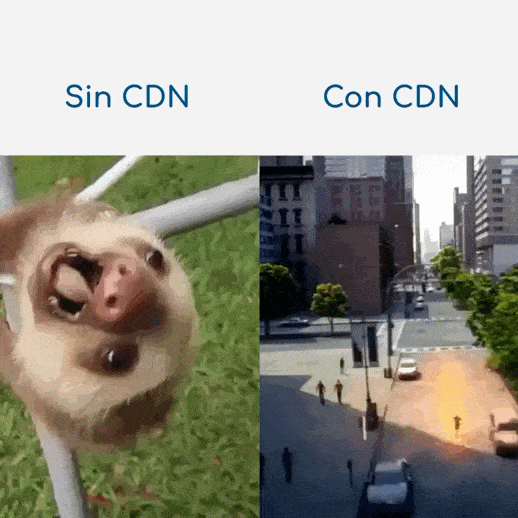
BONUSES! - Rich Snippets and Schema Markup
We are near the end of this section, we have covered all the basics, content optimization and technical aspects that affect the SEO of a website, but here we go all out!
Enriched results
There is a topic that is often referred to as “Advanced SEO”, since it is a bit complicated to understand at first, but it is essential if you want to get an advantage over your competitors, rich results is a way in which Google shows extra data about of your website in the results pages.
Typically, a result on Google looks like this:

The URL, title, and description of the page.
When a rich result is displayed, you can add a rating in the form of stars and an image, for example, among other elements.
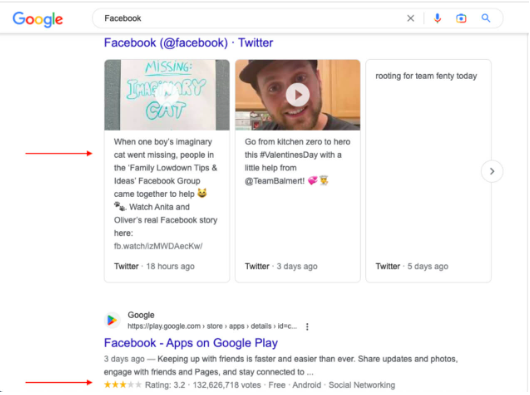
There are several types of enriched results, below we leave you which are accepted by Google:
Article
Book
Navigation path (breadcrumbs)
Carousel
Course
Data set
Questions and answers about education
Employer assessment
Estimated salary
Event
Data verification
Frequent questions
Activities to do at home
Instructive
Image metadata
Employment vacancy
Learning video
Local company
Logo
Math problem solutions
Movie
Practice problems
Product
Questions
Recipe
Review snippet
Search box to site links
Software app (beta)
Speakable (Content for voice assistant)
Paid and subscription content
Video
Each of these elements can be displayed prominently in search results, but we leave you the official documentation of Google's Rich Snippets, so you can see a graphical example of each one.
Structured Data (Schema Markup)
The source of all this: the language that allows Google to better understand your website and display a rich result is called “schema markup”, and it is a special markup that Google is trained to understand and thus better categorize the pages of your website to later show better results based on the information it obtains.
Sounds complicated, right?
Well, not so much... it turns out that there are many ways to create this structured data very easily, to begin with, plugins for CMS's that generate it automatically, online generators such as Schema Markup Generator or Schemantra (if what you need is more advanced), and finally, you can do them manually.
We use a mixture of the last two, since we make implementations beyond what is recommended by Google, for example, complete formats for SEO of real estate, products and services, travel agencies and others, always in the JSON-LD format.
Although Google does not explain it clearly, implementing other types of structured data that are not in their documentation is very helpful in giving your website that extra boost to SEO.
We recommend you take a look at schema.org, so you can see all the formats that exist.
Soon we will dedicate a complete article to this topic, since we could extend a few thousand more words… But we did not want to leave out the mention to sow curiosity in our readers.
Digital analytics
Congratulations! You finished the “How to appear on Google” guide, you officially know everything you need to do to have a super optimized site that will reach the top of the results.
But how will we know all of this is working once you've implemented it?
Introducing you to digital analytics!
Those who do not collect information from their website, walk between four walls blindfolded. You need to know what happens on your page in order to improve, and SEO is something that evolves day by day, you will constantly have to consult your analytics to understand how to continue, what fails or what works to replicate it.
There are a lot of tools that allow you to measure what happens on your website and see graphs of your traffic, the users who access your site, the most visited pages, the time they stay on them, and much more information.
We present the two most popular below.
Google Search Console
This will be your biggest source of data for SEO, register your domain (using the TXT registration method) in Google Search Console to be able to see how many times your website appeared in the results, the clicks it got and the keywords for which that you position yourself
This will help you tremendously when you want to refine your strategy and decide where to focus your efforts.
To obtain better results, make sure to register your sitemaps, and always be aware of the alerts that this tool sends you by mail, attend to possible errors that your site may have and correct them as soon as possible so that the performance of your site does not drop, this is your direct contact route with Google.
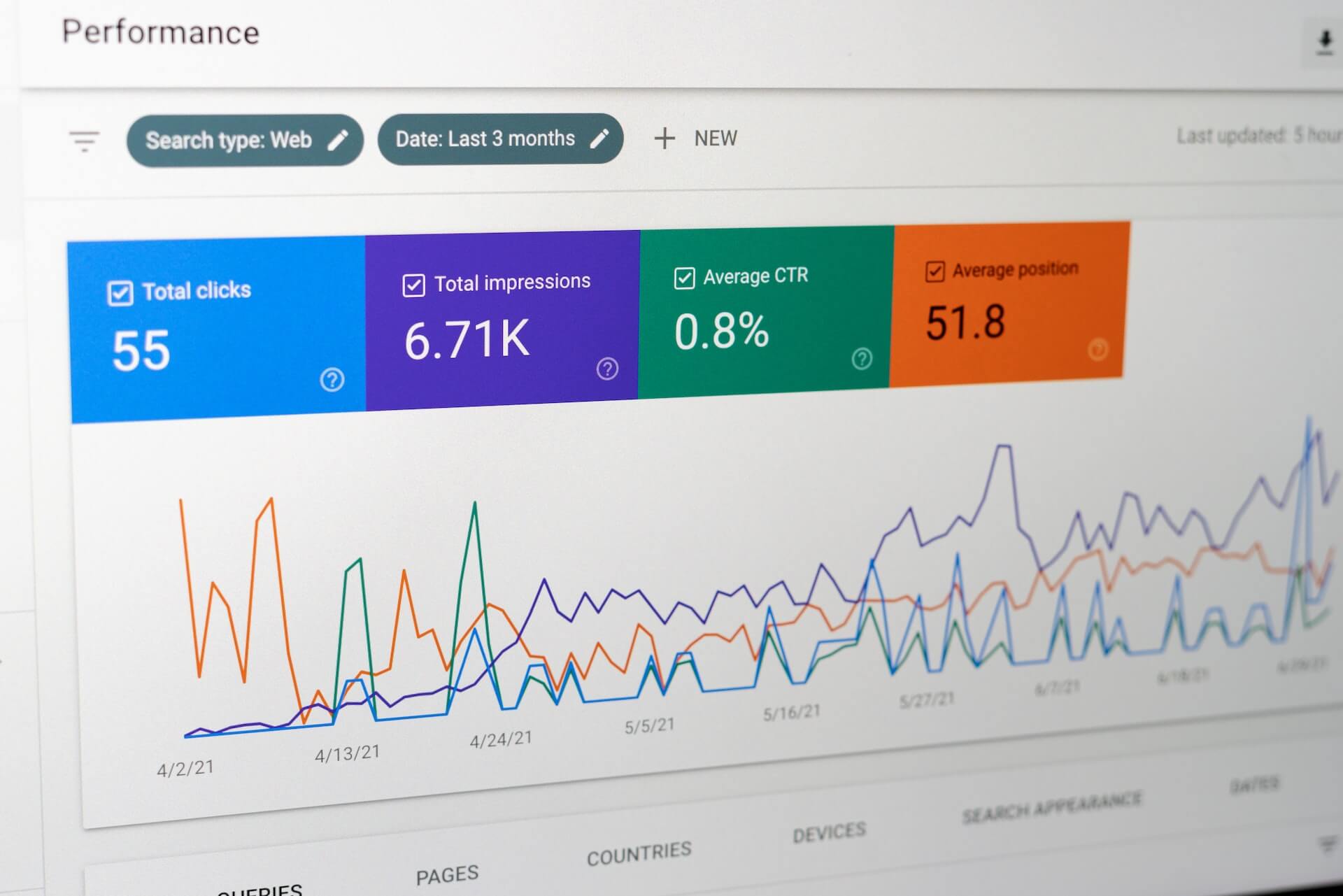
Google Analytics
This tool will measure the global traffic of your website, not only the traffic that comes from Google, but from other search engines, social networks, links on other websites, emails, and more sources.
In addition, it is a much more complete web analytics system, you will be able to establish objectives, personalized events to measure specific actions, such as button clicks or form submissions and thus obtain the most information from your users to be able to complement your digital marketing strategy further every day
The world of digital analytics can become a bit complex, so do not hesitate to ask us for guidance or hire our services so that we can make the necessary implementations so that you obtain the data you need.
BONUS - Bing Webmaster Tools
As we said at the beginning, do not leave other search engines out of your strategy. Bing is one of the largest and most important search engines after Google, and we see no reason to ignore it since Microsoft is the developer.
This is the default browser for Microsoft Edge, the browser that comes pre-installed on all Windows computers, and although its grandfather Internet Explorer gave it a terrible reputation, the truth is that Edge has been growing in recent years, and it occupied 5.83% of the market in 2022.
Bing Webmaster Tools is the homologous tool to Google Search Console that Microsoft makes available to measure the results of your positioning in Bing, and it is very important since you could be receiving thousands of impressions (times that your website appears as a result in searches) through this medium.
Once you've set up the Google tool, just import your account into Bing Webmaster Tools and voilà! Your domain will be verified. Also, this will help you get your site indexed on Yahoo as well.
More control panels?
Yandex Webmaster Tools will help you make your way in the Russian market, they offer a fairly complete interface where you can control your visibility in this search engine.
- If you want to put it in Chinese, then Baidu is for you! Literally its entire system is in Chinese, there is no version in English or another language, you will have to study a little bit… Or use Google Translate.
SEO Conclusions
As you can see, having a good presence takes a lot of dedication to implement each of the steps that we mentioned above, but it is totally worth it. Once you implement most of these things, the result remains with just a little maintenance; once you integrate SEO thinking into your content creation workflow, it's no more work to keep doing it that way.
So what are you waiting for to start?!
If you were left with doubts about any point, be curious and google it, send us a message and we will gladly answer you, or ask about our services and we will do it for you! As you prefer.
Contact us now!
And if you thought near the end, we have a surprise for you! We are going to extend this guide as much as possible, here is another of the most important ways to be present in Google: maps, they are essential for your local strategy.
Second round!
How to appear on Google Maps using Google My Business
Google Maps is one of the most popular platforms in the world, it is used by locals to find nearby shops and services and by tourists to find things to do during their travels.
Among the many advantages of being present on these maps is being found by these millions of people, so let's get started.

Verify your business
The first step is to open your business account, you can go to the Google my Business platform and start the registration process, they will ask you for various information, including the address of your business, telephone number, hours, etc. We recommend you fill in as much as you can, since the more information you make available, the better chance you will have of appearing in searches.
In order to have a Google my Business listing, you need to have a physical location, it can be your local or an office where you receive clients, there are several "hacks" that you can find on the Internet to create this profile without having a local, but the truth is that you run the risk of being canceled and all the effort will be in vain.
We do not recommend following these tips, although it is up to you.
Once you send all your information, they will send you a postcard with the activation code, the delivery time depends on the location of your business, but it does not usually take more than 15 days.

Make sure you have accurate information
A super important point is that you must have accurate and correct information in your profile, make sure that your cell phone can receive calls correctly, use the tools that Google my Business puts at your disposal to create special hours for festive dates, use the posts, etc.
Keep your file up to date so that you stay relevant, and get the first result in searches.
Pro Tip: use each of the sections that this platform offers you, including the products and services section, use keywords to create the descriptions.
Pro Tip 2: Make sure you have the same contact information on all your channels here, as well as on your website and social networks.
Add recent, high-quality photos
You will have a photo section, where your customers can upload images of your business, your products and services, but don't be left behind, be sure to upload your photos too, always in high quality and on a recurring basis, if you have videos, too! Upload them!
Opinions and reviews
Get your review link and send it to all your customers, print a QR code and put it in your reception, in your emails, everywhere!
Reviews will be your most valuable resource in convincing others that your business is their best option.
Optimize for local SEO
Take advantage of the posts, and with what we already taught you at the beginning of the article, create optimized posts with the keywords you researched for your website, put links to your website and high-quality images.
Bing Places
Similar to what happens between Google Search Console and Bing Webmaster Tools, Bing Places is the homologous tool to Google Maps, and you can do exactly the same process, once your Google my business profile is ready, open your Bing Places account for Business and import your Google account.
Once you do this, just review and fill in whatever is missing. Maintain them equally so you don't lose range.
Local SEO conclusions with Google my Business
This guide was much shorter than the one on SEO in search engines, soon we will dedicate a whole article to it in more detail but we did not want to leave it out, besides that I’m already tired of writing! About 7,000 words so far, we should charge for this…
But until we cover everything we won't finish this guide! So let's go for the third round:
Other formats to appear on Google
You already realized that we are really committed to helping you improve your Google presence on your own, but since we know that it is a lot of work, this is the point where we recommend you to see what we can help you with, take a look at our digital services!
After some quick advertisement, let's continue:
Google images
Surely you have Googled images of kittens, or perhaps ideas on how to decorate your home, or any other topic, but one thing is for sure, you know Google Images.
The photos you find there come from multiple websites and making them appear there is quite easy, they just have to be public on your server, and to have a better chance of positioning your images, always add alternative text and optimize them as we explained at the beginning of this article
If your website has thousands of images and they are the main element, you will want to include an image sitemap, but that is for another day…
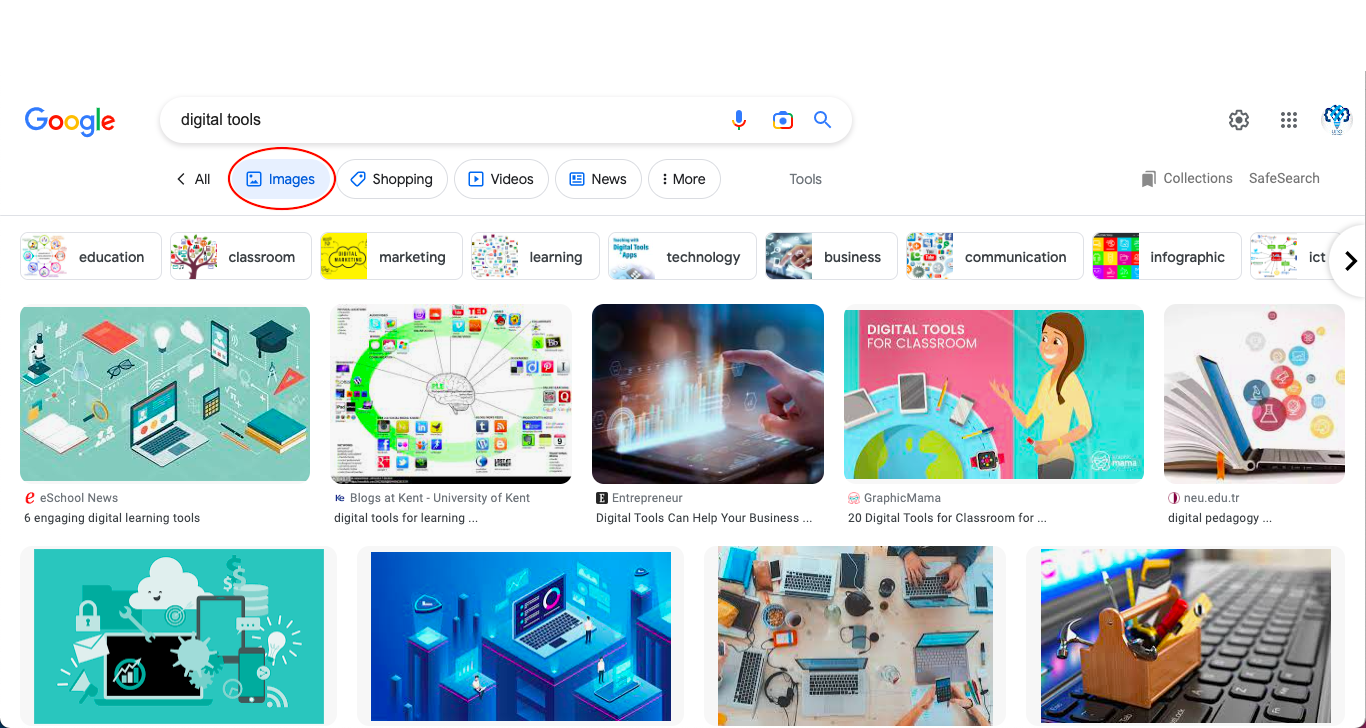
Google News
To appear in Google News there are several things to do, let's cover the basics.
The first thing will be to create authority for your site, you must have a moderately relevant site for your articles to appear in the news section, if you have already read the complete guide, you are on the right track.
With that out of the way, let's continue.
Use Schema Markup to mark your articles, cite reliable sources, add images, put a comment section, share on social networks and ensure that your publications have many interactions…
All this will help Google take you into account for this section.
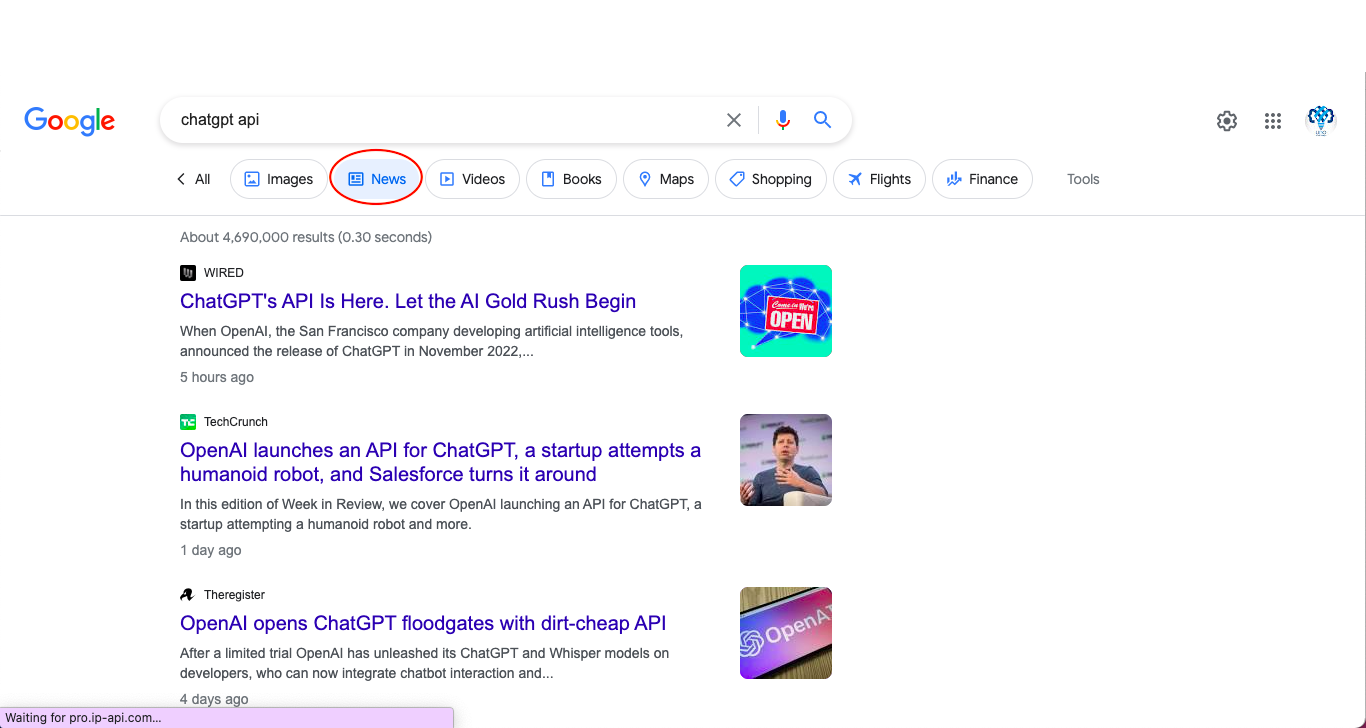
Google Videos
Most of the results in this section of Google come from YouTube, social networks and high authority websites, if you are starting out, we recommend that you keep YouTube as one of your priorities.
There is a sea of information to do SEO on YouTube, but the bases are found right here, the same principles that we deal with in the content section of "How to appear in the first results of Google and other search engines" apply, use keywords and those same tips to create the titles and descriptions of your videos, in addition, always add a custom thumbnail.
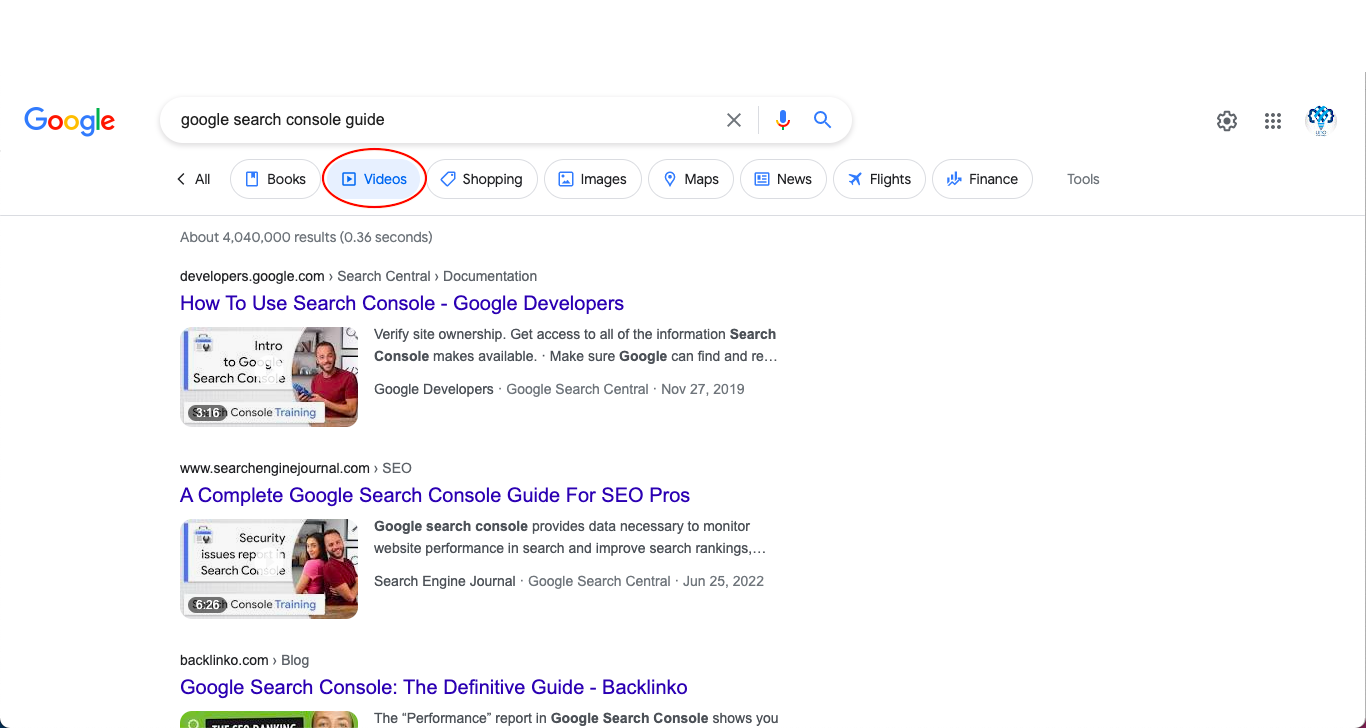
Google Shopping
Especially for E-commerce sites this section is interesting, in addition to having your product catalog on your website, you must open an account in Google Merchant Center, connect your website if it is created on one of the supported platforms or create your catalog manually, as always, fill in as much information as possible.
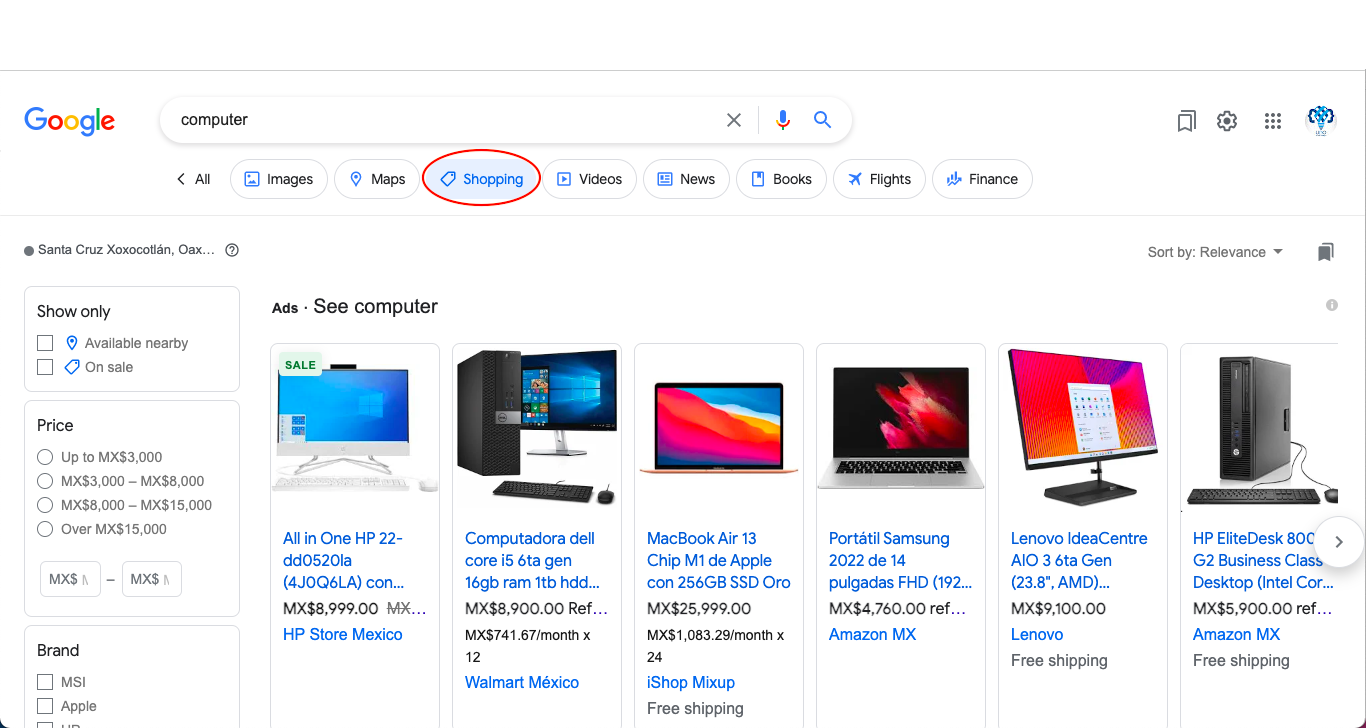
Google Ads
Lastly, Google Ads is Google's paid advertising platform, and it's the fastest way to get your website into search results, only it won't be permanent like SEO, as soon as you stop paying, you're gone.
But do not think that it is a bad tool, knowing how to use it can bring great profits to your business, not only in terms of reach and presence, but also in return on investment.
You can pay per click or impressions, and depending on your objectives you will configure your campaigns at your convenience, we recommend having an optimized website before starting to advertise with Google Ads, since you can reach thousands of people, but if you send them to a slow and confusing website, no one will get past the homepage.
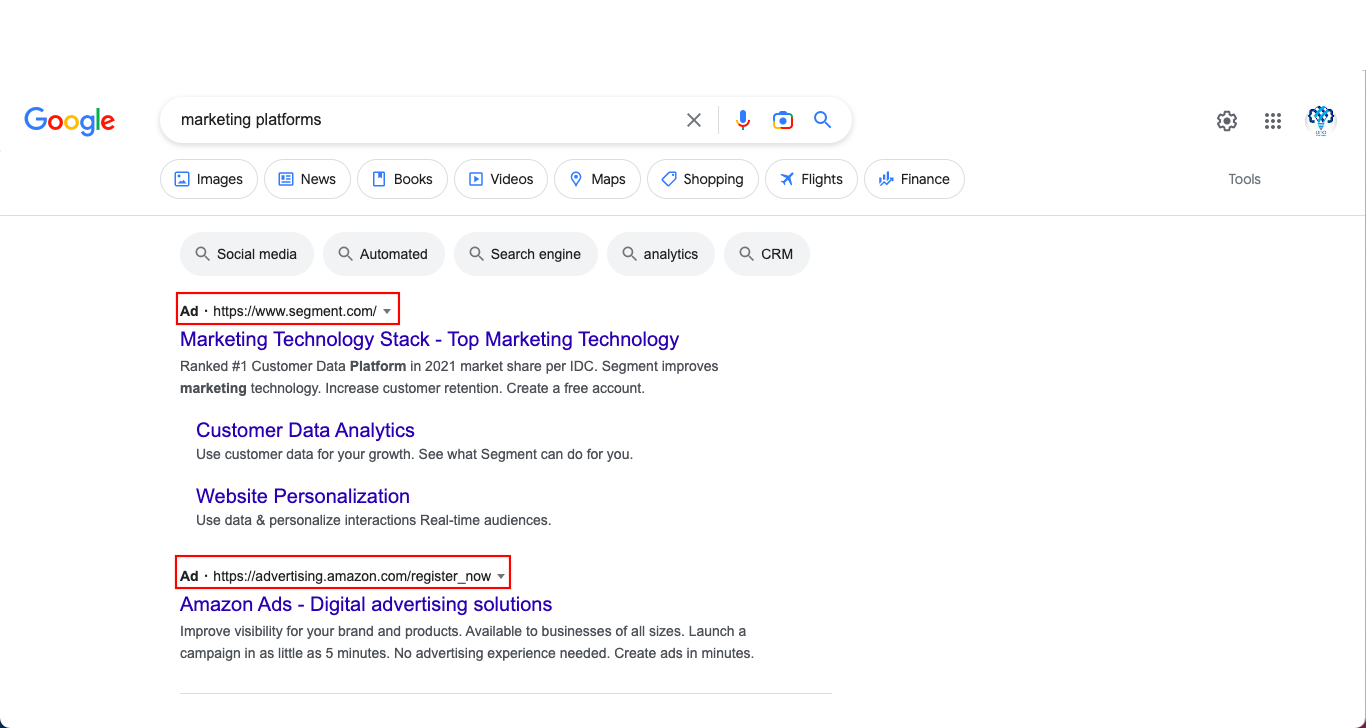
Final thoughts
Finally! We have reached the end of this guide. We put a lot of effort into it so that you can get the most out of it. Give yourself the time to review point by point and plan the optimization of your website. You do not have to do absolutely everything that we teach you here, you can select and do the optimization progressively.
We hope that you save this page in your favorites and return to it when necessary, we will keep each point updated so that you do not have to lose yourself in the immensity of the web.
See you soon in the next article!
